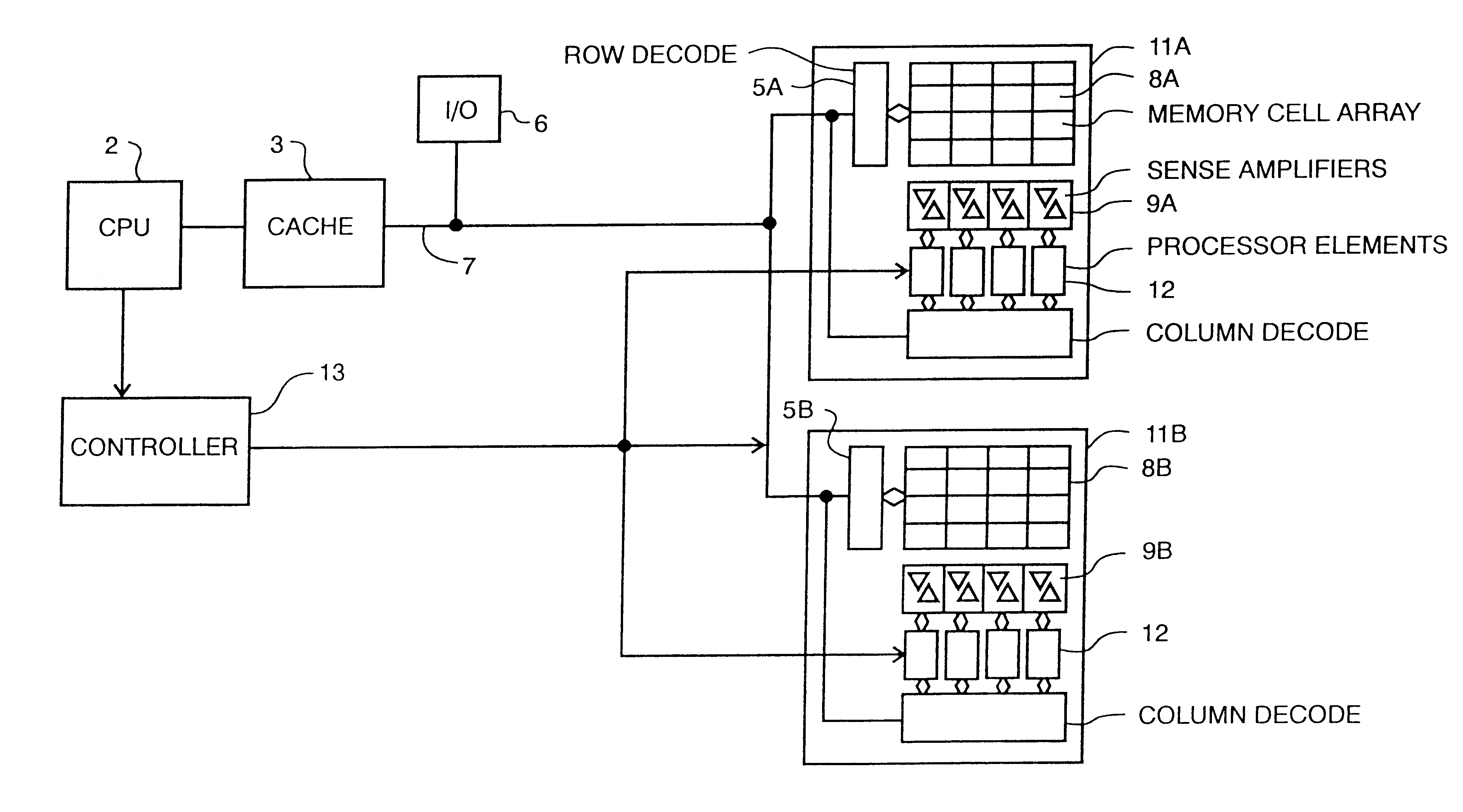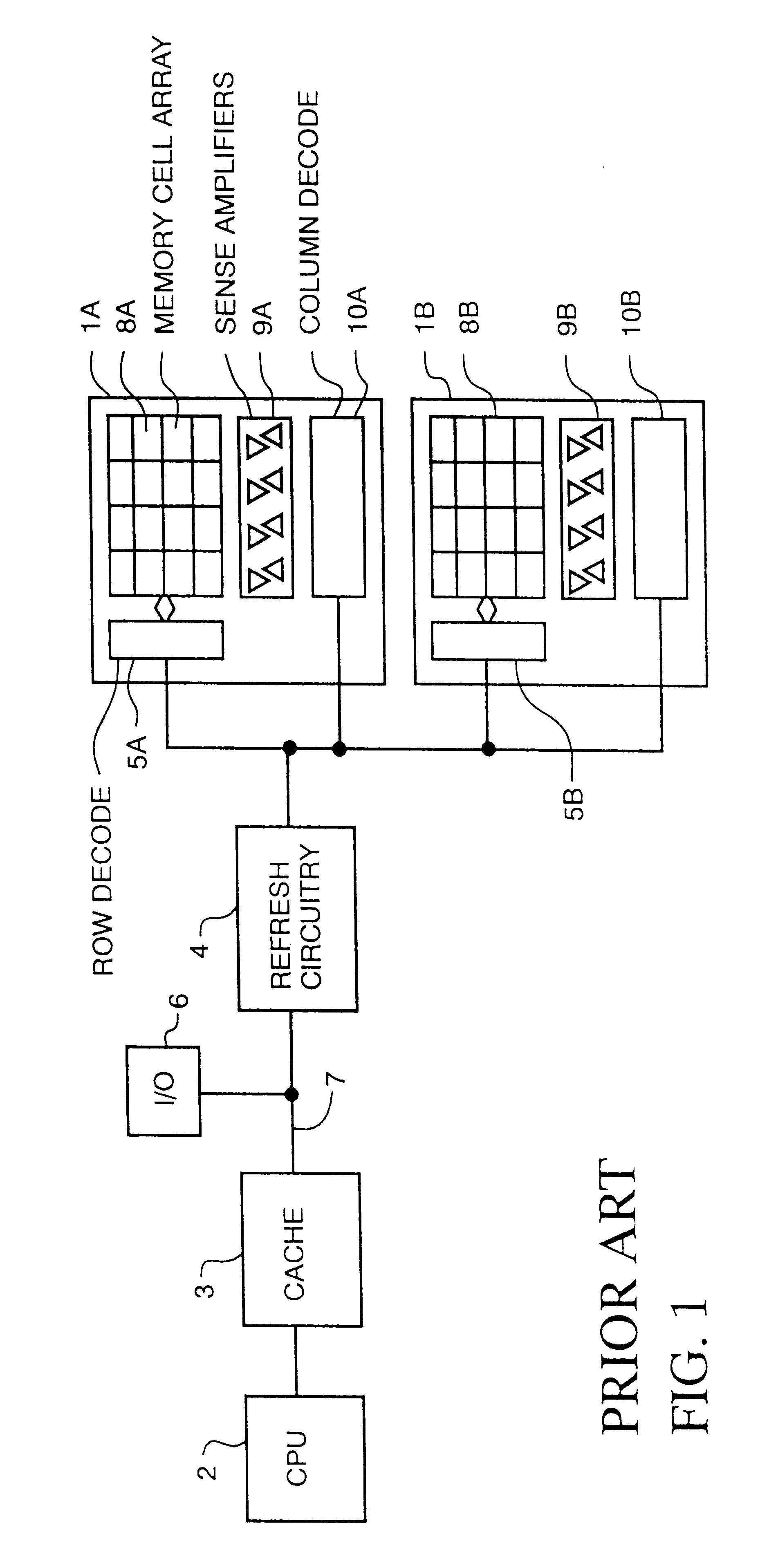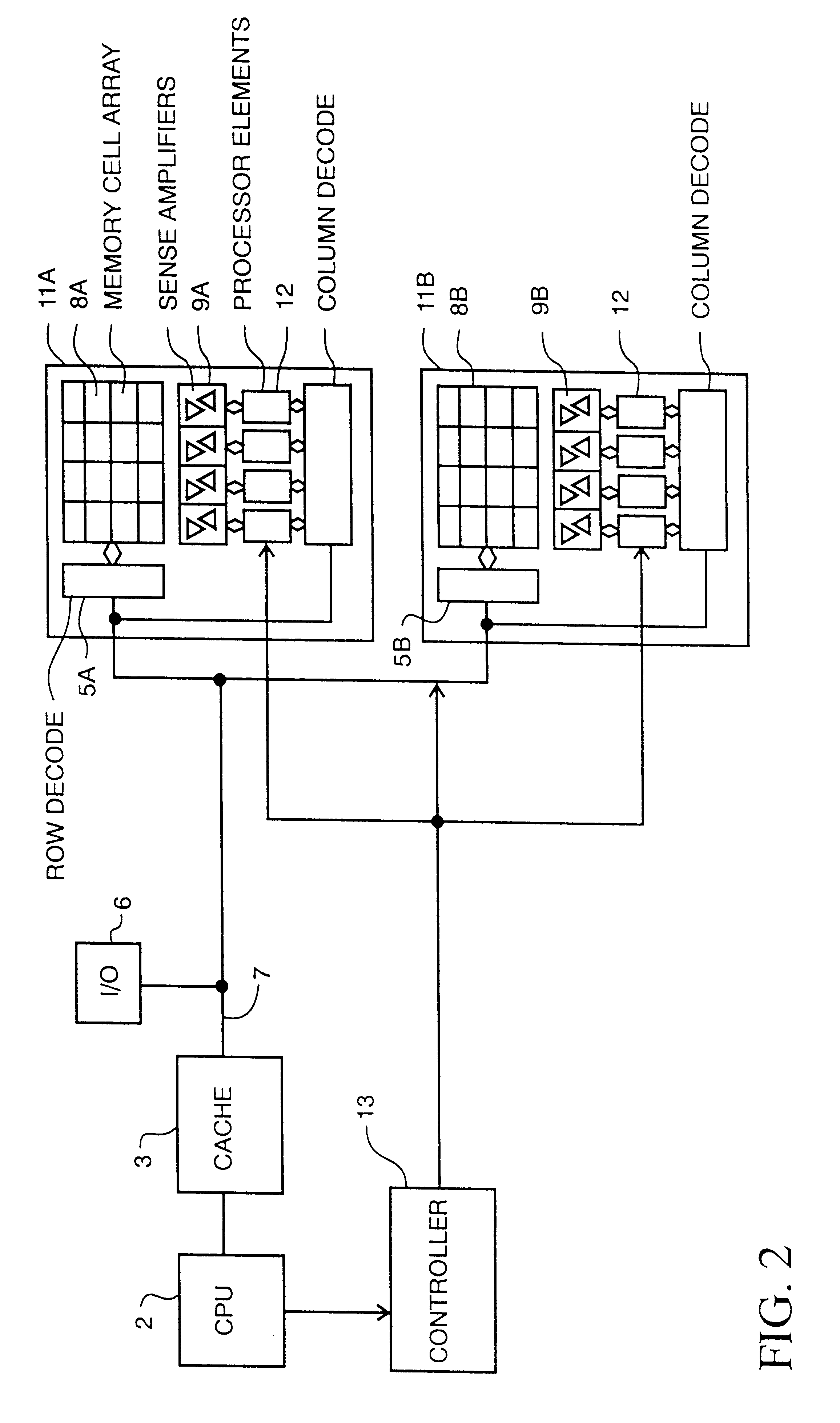Memory device with multiple processors having parallel access to the same memory area
a memory device and memory area technology, applied in the direction of multi-processing architecture, instruments, program control, etc., can solve the problems of limiting affecting the degree of integration, and occupying the processing elements slightly more than half the chip
- Summary
- Abstract
- Description
- Claims
- Application Information
AI Technical Summary
Benefits of technology
Problems solved by technology
Method used
Image
Examples
Embodiment Construction
Turning to FIG. 1, a memory comprised of memory portions (chips) 1A and 1B is shown. A central processing unit 2 is connected to a cache memory 3, which is connected to refresh circuitry 4, which is connected to memory address and row decode circuitry 5A and 5B. The computer input / output (I / O) circuit 6 is connected to the address and data bus 7 which is connected to cache 3. Each of the representative memory portions 1A and 1B is comprised of row decode circuitry 5A, 5B, a memory cell array 8A, 8B, sense amplifiers 9A, 9B connected to each column of memory cells, and column decode circuitry 10A, 10B.
In operation, CPU 2 addresses a row and column of a memory cell array in a well known manner, and applies a read enable or write enable signal to the decode circuitry which either reads or stores a bit in a memory cell via the sense amplifiers.
A representative CMOS memory cell is illustrated in FIG. B11 of Microcomputer Primer by Mitchell Waite and Michael Pardee, Howard W. Sams & Co. I...
PUM
 Login to View More
Login to View More Abstract
Description
Claims
Application Information
 Login to View More
Login to View More - R&D
- Intellectual Property
- Life Sciences
- Materials
- Tech Scout
- Unparalleled Data Quality
- Higher Quality Content
- 60% Fewer Hallucinations
Browse by: Latest US Patents, China's latest patents, Technical Efficacy Thesaurus, Application Domain, Technology Topic, Popular Technical Reports.
© 2025 PatSnap. All rights reserved.Legal|Privacy policy|Modern Slavery Act Transparency Statement|Sitemap|About US| Contact US: help@patsnap.com



